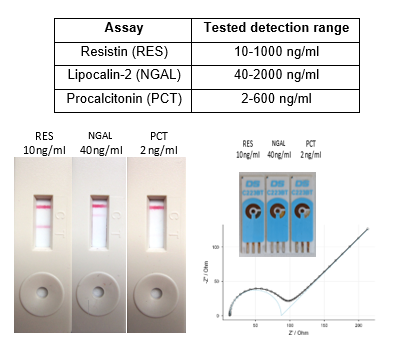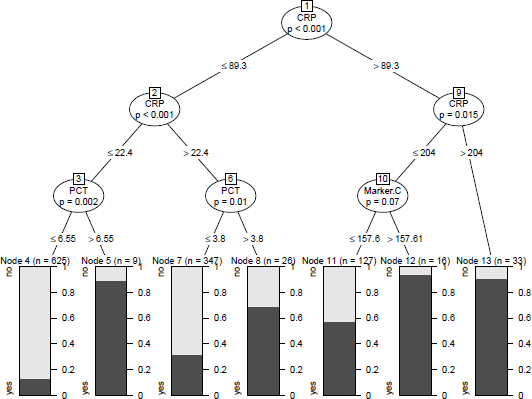Case Study: Sepsis Diagnostic - Biosensing & Lateral Flow Device
Introduction
We developed a consortium involving our sister company MicroLab Devices and University of Liverpool to develop an invitro-diagnostic test for Sepsis. We investigated the technology platforms of Lateral Flow Device and Electronic Biosensors, with a view to creating a low-cost point of care device that would provide a rapid diagnosis of Sepsis from a finger prick of blood. We had a patented panel of 3 Sepsis biomarkers which were to be utilised on each of the platforms and the measurement of the 3 biomarkers in conjunction would be fed into a clinical algorithm running in the smartphone app to provide a clinical score and liklihood the patent had Sepsis.
Key Points
Project Outcome

Lateral Flow Device Development
Forsite Diagnostics were lead on the development of the Lateral Flow Devices. We were investigating a simplex and multiplex solution based on our 3 biomarkers towards Sepsis. Our role was in the development of a Smartphone based Lateral Flow Device reader software which could a) detect the LFD and b) extract the line intensities for a quantification over the clinically relevant dynamic range. The smartphone based software was designed to handle both simplex and multiplex LFD's.


Electronic Biosensor
In parallel to the work on LFD development, we developed an electronic biosensor which used the same 3 antibody markers but which could be interrogated using electrochemical impedance spectroscopy, to gain quantifiable measurement of the proteins found in the finger prick sample. We developed a simplex solution based on binding the antibodies to screen printed gold electronics. A custom EIS accessory was developed which communicated with the smartphone and fed into the clinical decision making algorithm.
Software & Clinical Decision Making
The smartphone software could operate with either the LFD or EIS biosensor to read the 3 biomarkers. A clinical decision tree style algorithm was implemented to guide the clinician about the next steps that they should take based on the analysis of the patients finger prick blood sample.


